Cisco CCENT Device Function and Packet Delivery
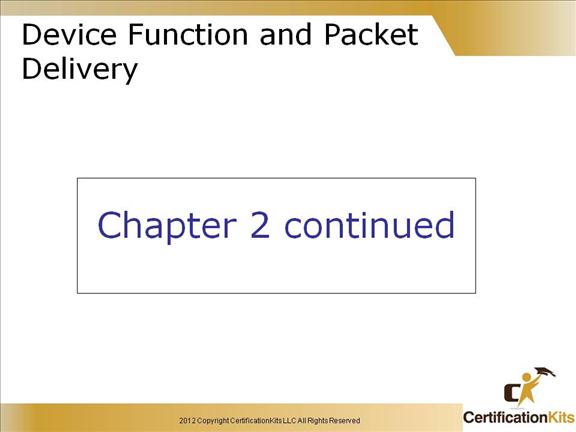
Now we will discuss device functions and packet delivery process for OSI layers 1 through 3.
Cisco CCENT Layer 1 Device Function
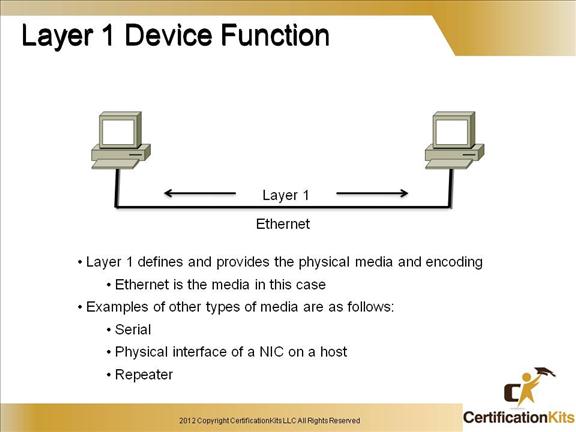
The physical layer defines the electrical, mechanical, procedural and functional specifications for:
activating
maintaining
deactivating
the physical link between end systems.
Some common examples are Ethernet segments and Serial links.
The Physical layer sends Bits between peer physical layers.
Cisco CCENT Layer 2 Device Function and Address
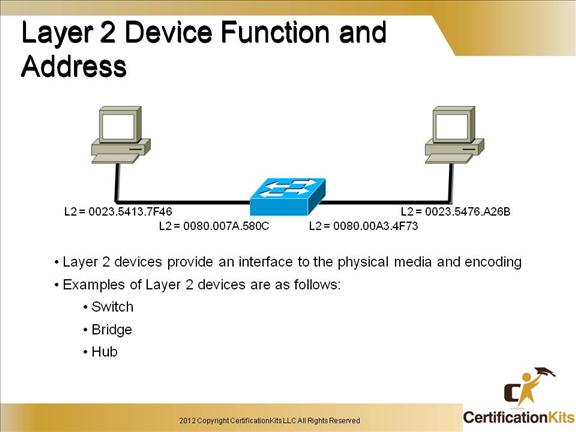
The Data Link layer (also called Layer 2) provides the physical transmission of the data and handles error notification, network topology, and flow control.
Addresses at the Data Link Layer (Layer 2) in a LAN environment are referred to as MAC addresses. Each device has a unique MAC address assigned by the vendor.
The Data Link layer sends Frames between peer data link layers.
Cisco CCENT Layer 2 Packet Delivery
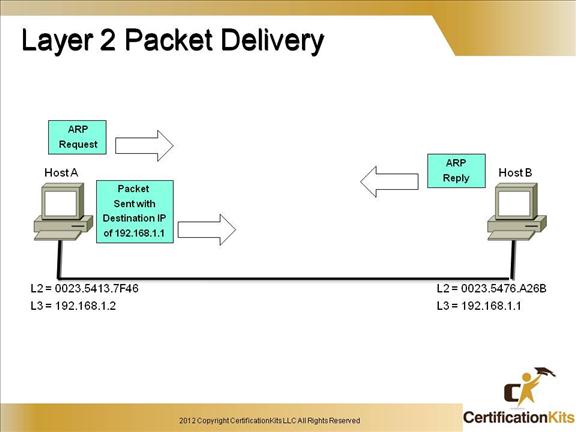
Delivering an IP packet within a single LAN segment is pretty simple. If host A wants to send a packet to host B it first must have an IP address to MAC address mapping for host B since at Layer 2 packets are sent with MAC addresses as the source and destination addresses. If a mapping does not exist, host A will send an ARP Request (broadcast on the LAN segment) requesting the MAC address for IP address 192.168.1.1. Host B will receive the request and respond with an ARP reply indicating the MAC address is 0080.007A.580C.
Now that host A knows the MAC address associated with 192.168.1.1 it can send an IP packet with a destination address of 192.168.2.2. The ethernet frame will have a source IP of 192.168.1.2, destination IP of 192.168.2.2, source MAC of 0023.5413.7F46 and destination MAC of 0023.5476.A26B.
Cisco CCENT Layer 3 Address
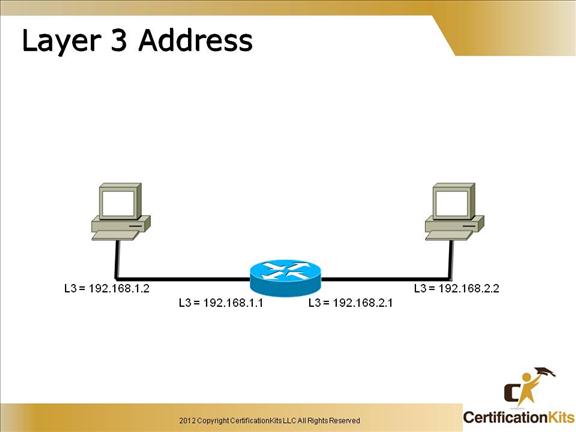
Network Layer (Layer 3) addresses are logical addresses assigned by a network administrator.
The slide shows IPv4 addresses.
Cisco CCENT Layer 3 Packet Delivery
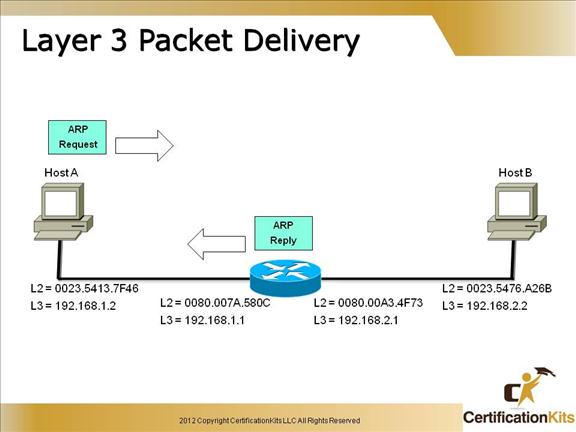
There are several steps involved in delivering an IP packet across a routed network. When a packet is not destined for the local network the hosts sends it to its default gateway which is the address of a directly connected router.
For example if host A wants to send a packet to host B it will send the packet to its default gateway which is the address of the router. In order to send a packet to the router, host A will need to know the MAC address of the router. To find this, host A sends an ARP packet asking for the MAC address that is associated with IP address 192.168.1.1. This packet is broadcast on the local network. The router receives the ARP request and realizes it is for an IP address he has configured so he responds with an ARP Reply indicating the MAC address is 0080.007A.580C.
Cisco CCENT Layer 3 Packet Delivery
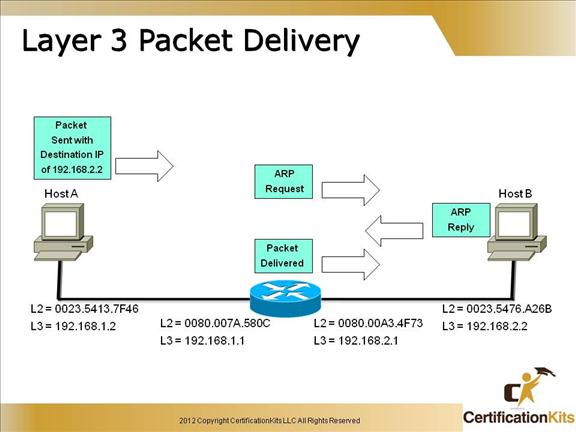
Now that host A knows the MAC address associated with 192.168.1.1 it can send an IP packet with a destination address of 192.168.2.2. The packet with have a source IP of 192.168.1.2, destination IP of 192.168.2.2, source MAC of 0023.5413.7F46 and destination MAC of 0080.007A.580C. When the router receives the packet it will end an ARP request for 192.168.2.2. Host B receives the ARP request and responds with an ARP reply indicating the MAC address associated with IP address 192.168.2.2 is 0023.5476.A26B.
Now that the router knows the MAC address of 192.168.2.2 it can send the packet. The ethernet frame delivered to host B will have a source IP of 192.168.1.2, destination IP of 192.168.2.2, source MAC of 0080.00A3.4F73 and destination MAC of 0023.5476.A26B.
Note: The packet delivered by the router ha the same source / destination IP but different source / destination MACs.
